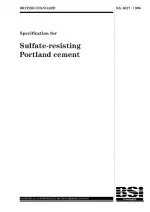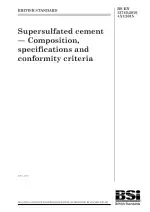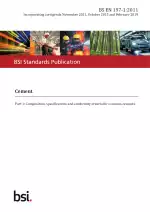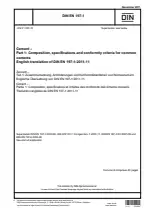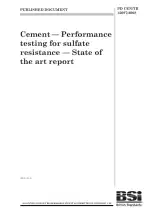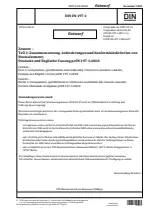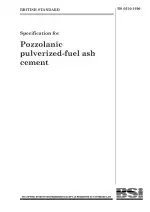BS 4027:1996 PDF Download
Standard EN SampleSpecification for Sulfate-Resisting Portland Cement
Also Known As:
BS 4027:1996 outlines the requirements for the composition, strength, physical, and chemical properties of three strength classes. The standard provides guidelines for ensuring the quality and performance of sulfate-resisting Portland cement, which is commonly used in construction projects where the cement is exposed to sulfates in the surrounding environment.
The standard specifies the composition of the cement, including the maximum limits for the main chemical constituents such as tricalcium aluminate, tricalcium silicate, and dicalcium silicate. These composition requirements ensure the production of cement that is resistant to the corrosive effects of sulfates.
Additionally, the standard sets forth the strength requirements for three different classes of sulfate-resisting Portland cement. These strength classes indicate the minimum compressive strength that the cement must achieve after a specified curing period. Compliance with these strength requirements helps ensure the structural integrity and durability of the cement in various applications.
Furthermore, the standard outlines the physical and chemical properties that the cement must possess, such as fineness, setting time, and sulfate resistance. These properties are crucial in determining the workability, setting characteristics, and resistance to sulfate attack of the cement.
| Descriptors | Portland cement, Sulfate-resisting cement, Cements, Composition, Chemical composition, Grades (quality), Compressive strength, Setting, Time, Expansion (deformation), Marking, Safety measures, Acceptance inspection, Storage, Performance |
| ICS Codes | 91.100.10 - Cement. Gypsum. Lime. Mortar |
| Language(s) | English |
| ISBN | 0 580 25324 4 |
| File Size | 225.3 KB |

